Airport type Public, Defunct 13R/31L 7,269 Owner Austin | Elevation AMSL 632 ft / 193 m Elevation 193 m Opened 14 October 1930 | |
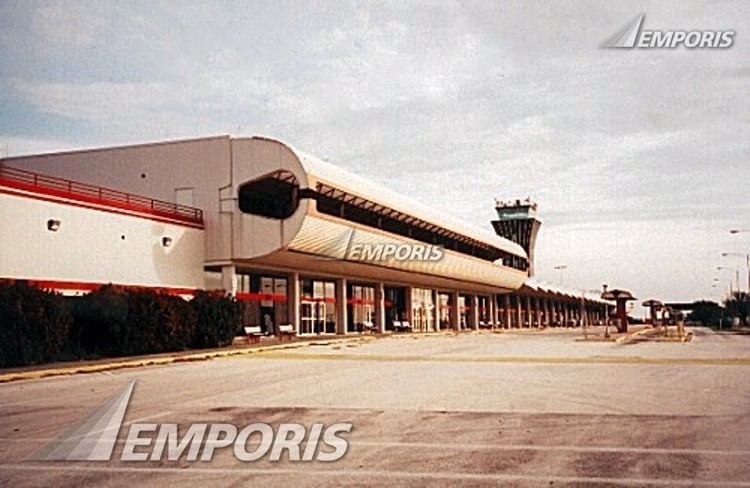 | ||
Closed May 21, 1999 (1999-05-21) | ||
Robert Mueller Municipal Airport (/ˈmɪlər/ MILL-ər) was the first civilian airport built in Austin, Texas, operating from 1930 to 1999. It was replaced as Greater Austin's main airport by the Austin Bergstrom International Airport. Located a few miles northeast of downtown Austin, the airport was named after Robert Mueller, a city commissioner who had died while in office in January 1927. Mueller was identified with the three letter "AUS" airport code and this "AUS" code was then assigned to the Austin Bergstrom International Airport in 1999.
Contents
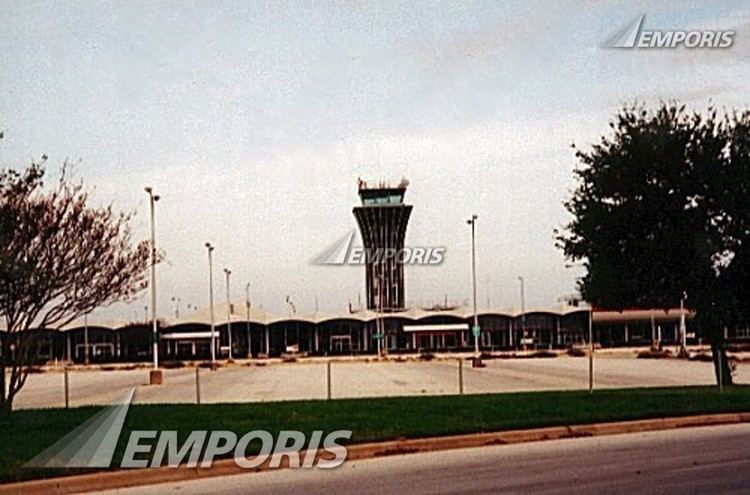
History
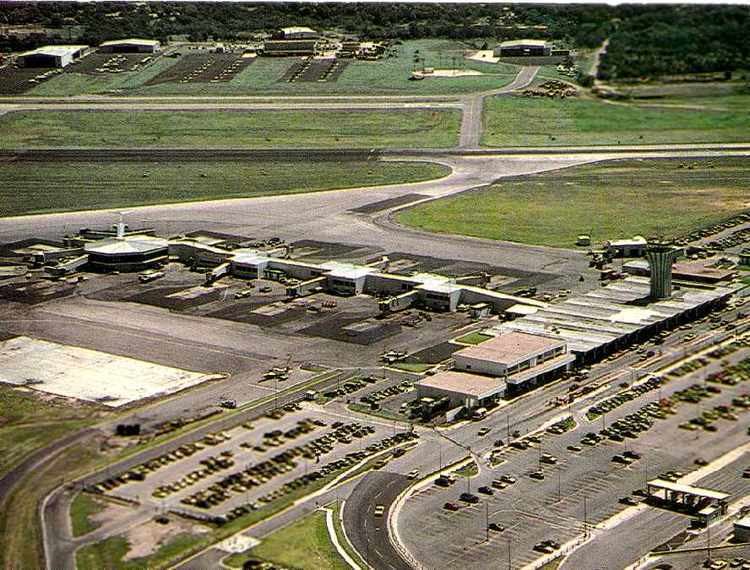
As the need for commercial air service became clear in the 1920s, Austin voters supported a bond election to build a municipal airport for the city in 1928. The airport was constructed a few miles northeast of downtown, on what was then the edge of the city. The airport began operation on 14 October 1930, although commercial service would not begin until 1936.
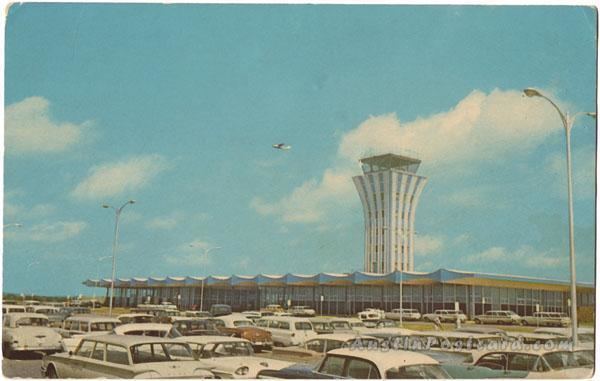
In the 1950s, developers began building residential areas beneath the flight paths of Mueller and, in parallel, the number of arrivals and departures at the airport increased dramatically as the city's population grew. The April 1957 OAG lists a total of 33 weekday departures operated by three airlines: fifteen on Braniff International Airways, ten on Trans-Texas Airways (TTa) and eight on Continental Airlines. No nonstop flights were operated beyond San Antonio, San Angelo, Dallas Love Field (DAL) or Houston Hobby Airport (HOU) at this time. The first scheduled nonstop beyond Texas was flown from Mueller with a Boeing 727 operated by Braniff to Washington Dulles Airport (IAD) in 1968; that flight lasted until 1980. It was the only nonstop out of the state until Braniff attempted to serve Chicago O'Hare Airport (ORD) nonstop in 1978.
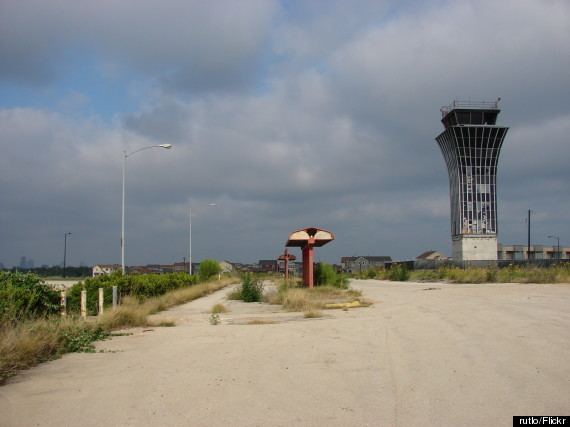
In 1963, Continental was operating British-manufactured Vickers Viscount four-engine turboprops on a daily round trip routing of Houston Hobby Airport – Austin – San Angelo – Midland/Odessa – El Paso – Tucson – Phoenix – Los Angeles as well as flying Viscount propjet service direct to Lubbock and Amarillo. By 1964, Continental had ceased serving Austin; however, by 1970 the airline was once again operating flights into Mueller.
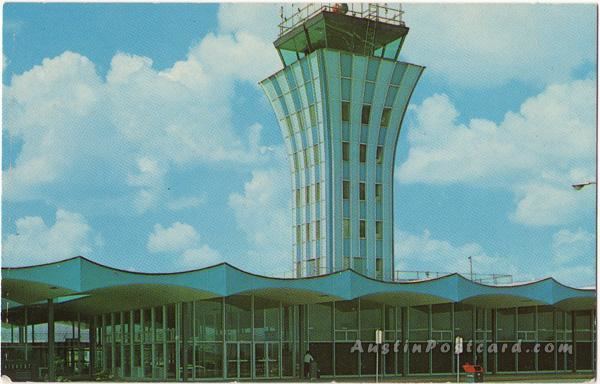
The jet age arrived in Austin in 1965 when Braniff introduced British Aircraft Corporation BAC One-Eleven twin jets with nonstop service to Dallas Love Field and San Antonio as well as direct, no change of plane jet service to Chicago O'Hare, Kansas City, Oklahoma City, Wichita, Amarillo, Lubbock and Corpus Christi. According to the airline's September 7, 1965 system timetable, Braniff was also operating Lockheed L-188 Electra propjets at this time nonstop to Dallas Love Field, Fort Worth (via Greater Southwest International Airport) and San Antonio with direct Electra service being flown from Austin to Washington D.C. National Airport (DCA), Denver, Colorado Springs, Oklahoma City and Corpus Christi.
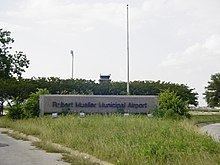
By 1968, Trans-Texas Airways was operating Douglas DC-9-10 twin jets into Mueller with nonstops to Dallas Love Field, Houston Hobby and San Antonio as well as direct, no change of plane jet service being flown to New Orleans, Memphis, Little Rock and Corpus Christi.
In early 1976, the same three airlines were operating scheduled passenger service into the airport although Trans-Texas Airways had changed its name to Texas International Airlines. According to the Official Airline Guide (OAG), Braniff was operating up to eight nonstops a day to Dallas/Fort Worth International Airport (DFW) with Boeing 727-100 and 727-200 jetliners and was also operating the aforementioned nonstop service to Washington Dulles Airport with a 727-200 as well as nonstop 727-200 service to San Antonio. In addition, Braniff was operating one stop, no change of plane 727 jet service to Chicago O'Hare Airport, New York JFK Airport, Kansas City, Memphis and Amarillo and also direct, multi-stop 727 flights to Detroit, Newark and Washington National Airport (which would become Ronald Reagan Airport). All of the Continental service at this time was being operated with Boeing 727-200 jetliners with nonstop service three times a day to both Houston Intercontinental Airport (IAH) and Midland/Odessa with one stop, no change of plane jet service being flown to Miami and El Paso. Continental was also operating direct, multi-stop service several times a day to Los Angeles (LAX), Phoenix and Tucson, and subsequently operated Boeing 720B jetliners into Mueller on the multi-stop route between IAH and LAX which included AUS. Texas International was flying nonstop Douglas DC-9-10 jet service to Dallas/Ft. Worth International Airport, Houston Intercontinental, Lubbock and San Antonio with one stop, no change of plane jet flights being operated to Albuquerque, Amarillo, Corpus Christi, Laredo and Little Rock. Texas International was also operating direct, multi-stop DC-9 flights to Denver and Los Angeles as well as flying nonstop Convair 600 turboprop flights to Houston in addition to its DC-9 service on the route. By 1979, Texas International was flying McDonnell Douglas DC-9-30 jetliners in addition to DC-9-10s and was operating all flights with jets from Mueller.
On February 13, 1978, Southwest Airlines operating as an intrastate air carrier began Boeing 737-200 jet service into Mueller. In July 1978, Southwest was flying nonstop from Austin to Dallas Love Field (DAL), Houston Hobby (HOU), Corpus Christi and Harlingen. By 1979, Delta Air Lines and Eastern Air Lines had begun serving Austin with both airlines flying nonstop to Atlanta with Eastern also operating nonstop to Houston Intercontinental (IAH) with direct, one stop service to Boston. Delta was operating Boeing 727-200 jetliners while Eastern was flying Boeing 727-100 and McDonnell Douglas DC-9-30 jets into the airport at this time. In 1981, American Airlines began service into Mueller, followed in 1983 by United Airlines and USAir (which was renamed US Airways and has now been merged into American Airlines). American was flying nonstop to Dallas/Ft. Worth (DFW), Chicago O'Hare and Corpus Christi during the early 1980s and was operating Boeing 727-100s and 727-200s as well as McDonnell Douglas MD-80 and wide body McDonnell Douglas DC-10 jets into the airport. American introduced Austin's first widebody service with nonstop DC-10 flights to Dallas/Ft. Worth and would later operate the Boeing 767 to DFW from Mueller as well. Also at this time, United was operating nonstop Boeing 727-100 service to Chicago O'Hare, Denver, Dallas/Ft. Worth and San Antonio while USAir was flying nonstop to Houston Intercontinental with one flight a day operated with a Boeing 737-200 with direct, one stop service to Pittsburgh. Other airlines operating jet service into Austin during the 1980s included America West Airlines, Emerald Air (which was based in Austin and operated not only independently but also as Pan Am Express), Muse Air and its successor TranStar Airlines, Northwest Airlines, Pan Am, Trans World Airlines (TWA) and Western Airlines. By the late 1980s, every major U.S. air carrier in existence at that time was serving Robert Mueller Municipal Airport with mainline jet aircraft.
Expansions
A new passenger terminal and control tower were built in 1961. The control tower was known for its alternating light blue and dark blue porcelain panels. The terminal and control tower were dedicated in a ceremony attended by Vice President Lyndon B. Johnson and Austin Mayor Lester Palmer.
A major expansion at Mueller took place in the 1970s, including improvements to the runways and the terminal. Before the expansion, the departure area consisted of 4 to 5 gates, not enclosed but covered by a large awning; no jetways were present at the time. Mueller's longest runway was 7,000 feet (2,100 m) long, and by the late 1990s the passenger terminal was operating at full capacity with 16 gates.
For a number of years, the Texas Army National Guard also had facilities at the airport.
Closure and replacement
Whether the aging Mueller should be relocated to Manor, Texas, was a perennial issue in Austin politics, until the closure of Bergstrom Air Force Base opened another possibility.
Nearby Bergstrom Air Force Base to the southeast of downtown Austin closed as an active military base in 1993, and it was decommissioned as a reserve base in 1996. The primary runway, designed for military cargo and high-performance jets, was left intact and required little work to return to serviceable condition. Smaller military-era buildings at the site were demolished, and a new terminal building and traffic/parking infrastructure was built in their place, creating an international-capable civilian airport to replace Mueller Airport.
Mueller Airport's commercial service ended on 21 May 1999, replaced by the new Austin Bergstrom International Airport; while general aviation activities at Mueller continued through 22 June 1999.
Redevelopment as Mueller Community
The 711 acres (3 km2) of land that once housed the airport sat vacant and unused for more than half a decade until the city approved a development plan. The new Mueller Community broke ground in 2007 and is expected to take at least ten years to be fully developed.
The airport's control tower has been preserved and restored in response to the local community's desire to keep the iconic 1961 structure
It is the current location for Robert Rodriguez's production company, Troublemaker Studios.
